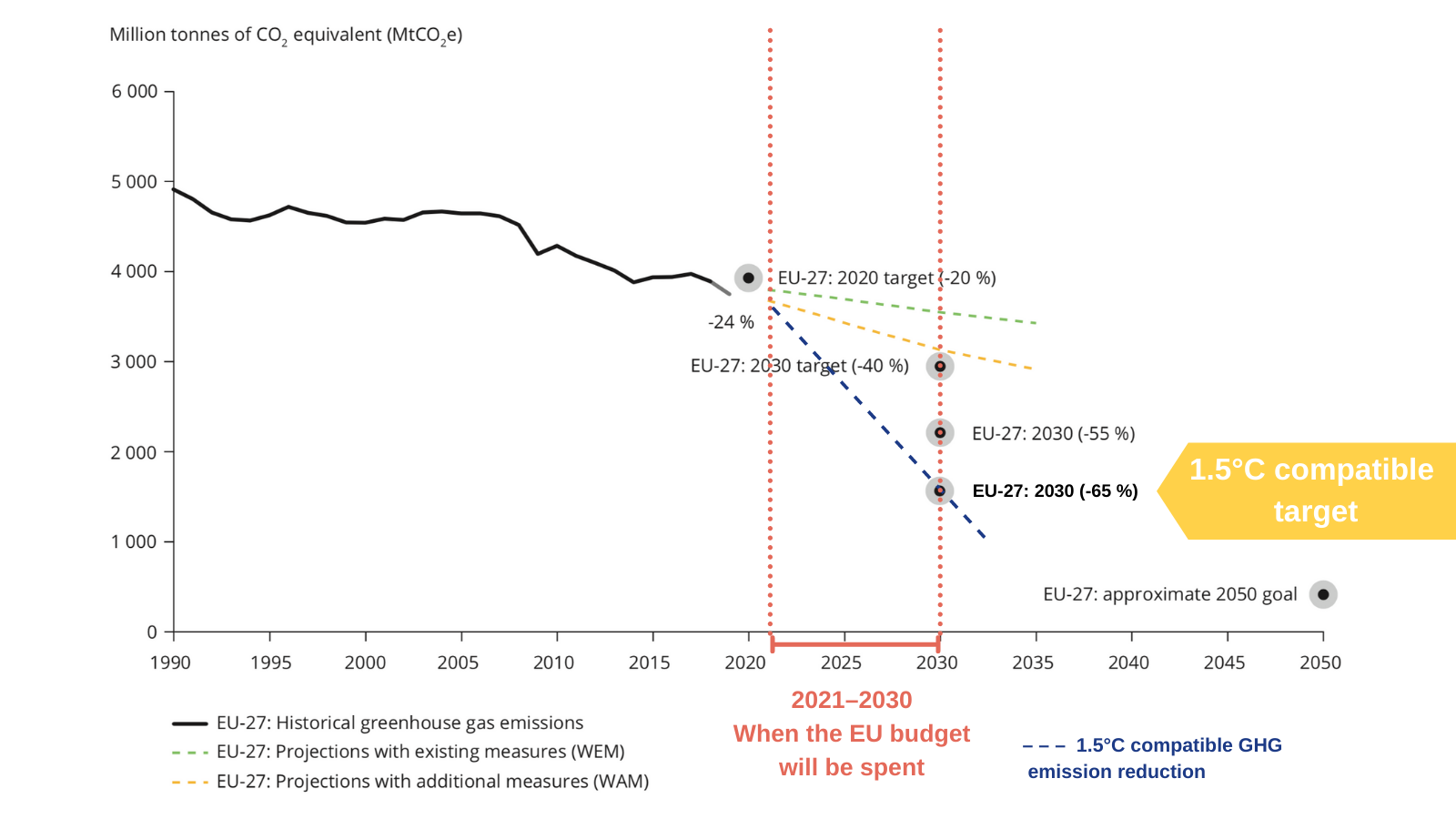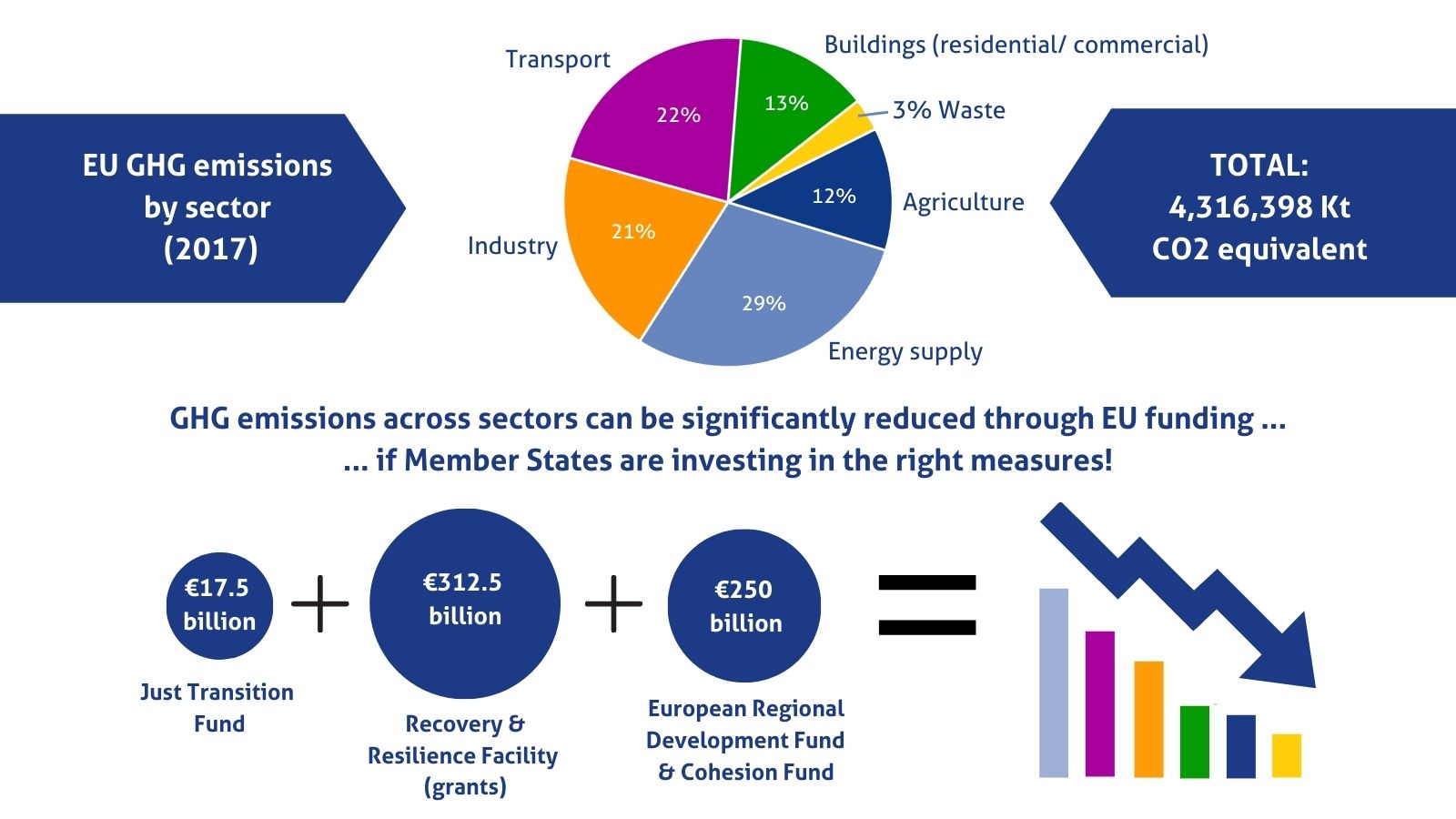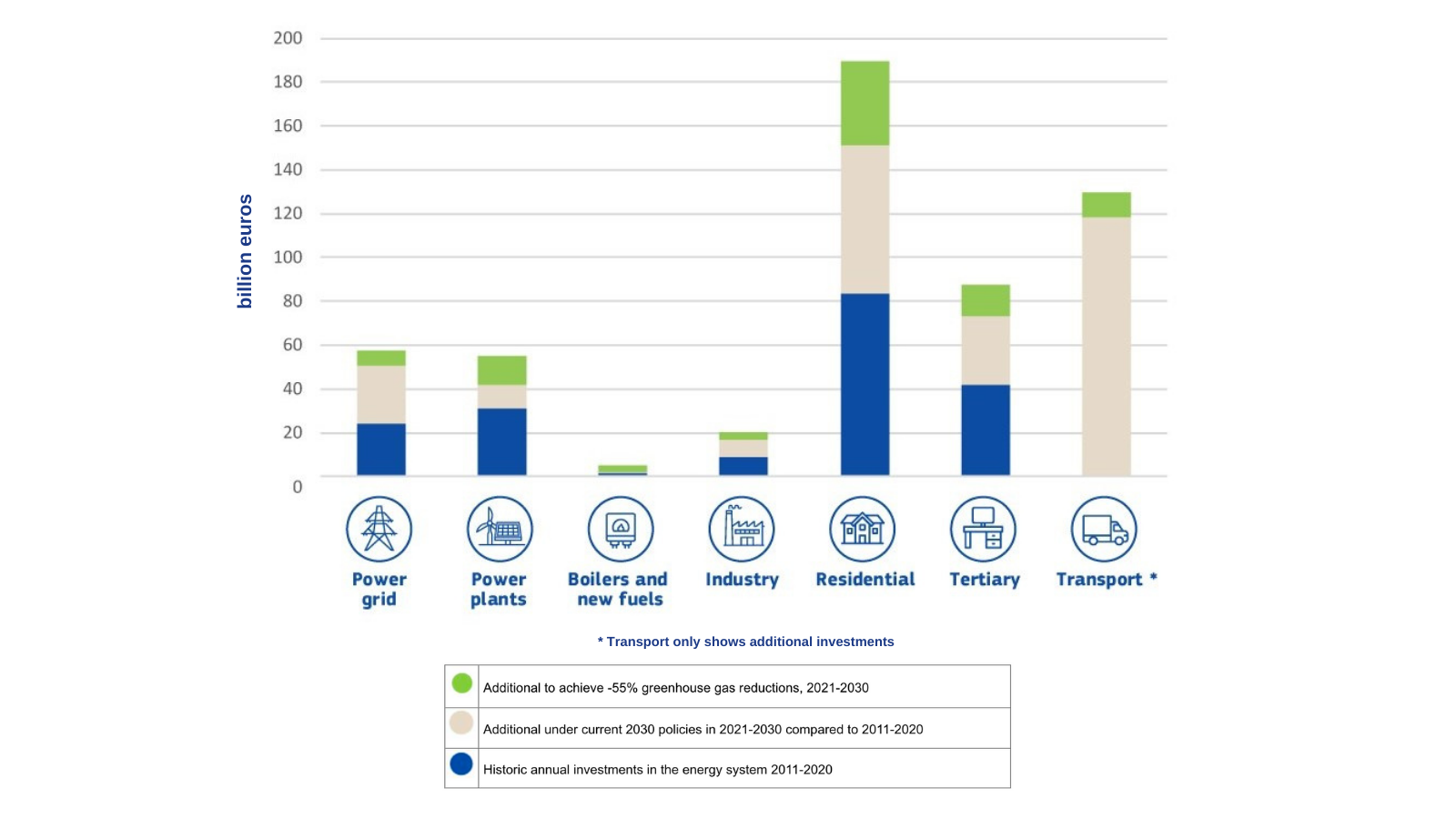The European Union is preparing to spend its long-term budget for 2021-2027, worth €1.074 trillion, together with another €750 billion of funding to help its member states recover from the socio-economic crisis caused by the coronavirus pandemic.
An unprecedented amount of EU cash
Here is how much cash each country will get
*in 2018 prices; ** average of 2018 and 2019 actual auction revenues, amounts in 2021 to 2027 will depend on the quantity and price of auctioned allowances; ***current prices.
Member States and the European Commission must ensure that this unprecedented amount of money is spent wisely. While all EU funds should support people and relaunch ailing economies in the short term, they are also meant to build sustainable, more resilient societies and economies for the future. To do so, these economic stimuli and investments must also address the other, worsening long-term crisis: climate change. Most of all the next generation of EU funding must bring European economies on a pathway to achieve climate neutrality.
EU greenhouse gas emissions must decrease sharply in the next few years

This is the moment for the EU and its Member States to show they are committed to fight dangerous climate change. Amid the looming economic crisis, they are planning how EU funds will be allocated by drafting national, regional and local spending plans.
The main political challenge for Member States is to develop EU funds spending plans which maximise their climate ambition and impact.
Specifically, the EU Cash Awards will expose climate-friendly and climate-harmful measures of the spending plans for EU’s regional funds (“Partnership Agreements” and “Operational Programmes”), just transition funds (“Territorial Just Transition Plans”) and the recovery fund (“Recovery and Resilience Plans”). However, it will also monitor national budgets, because good and bad spending practices can originate from all levels of governance.
Investment needs are clear – they are significant, but not impossible … and nothing against the cost of inaction!
This EU Cash has to deliver the emission reduction

In the first half of 2021, as spending plans are gradually finalised, negotiations between Member States and the European Commission will unfold. This campaign will mobilise around the development and negotiations of EU funds spending plans to let the voice of civil society be heard.
Because the outcome of these negotiations, and the level of ambition of the spending plans, will indelibly shape the future of Europe and the face of the climate crisis.
Investments for a green recovery are needed now!



